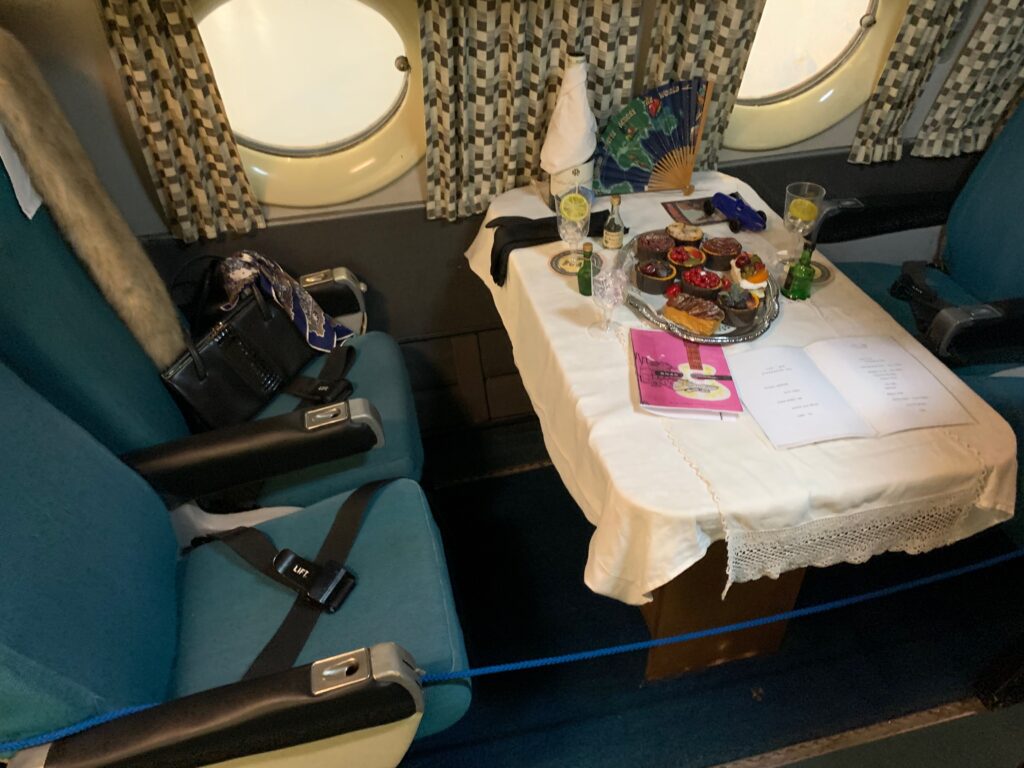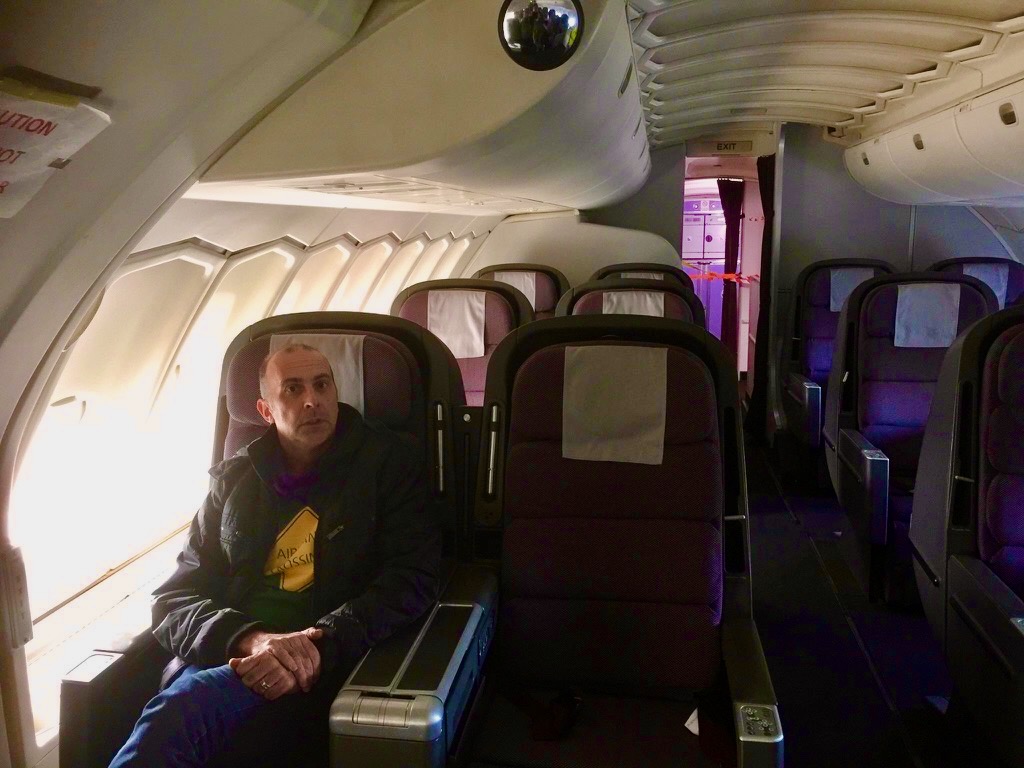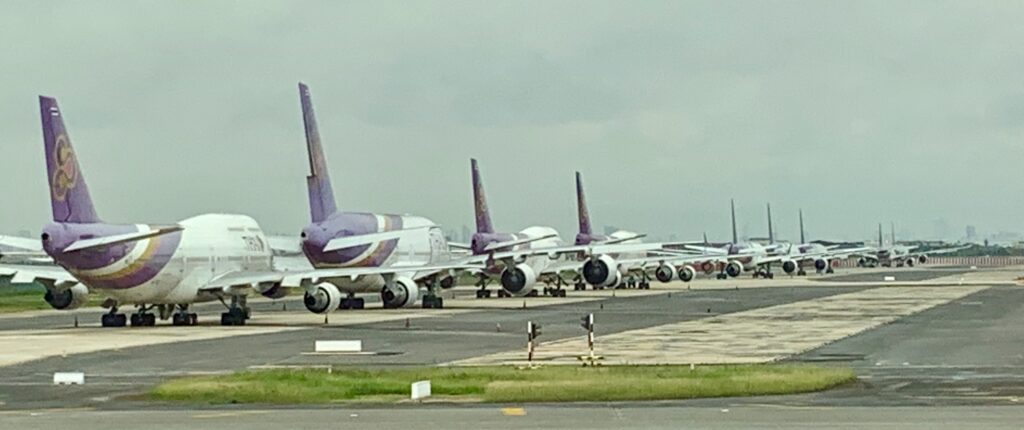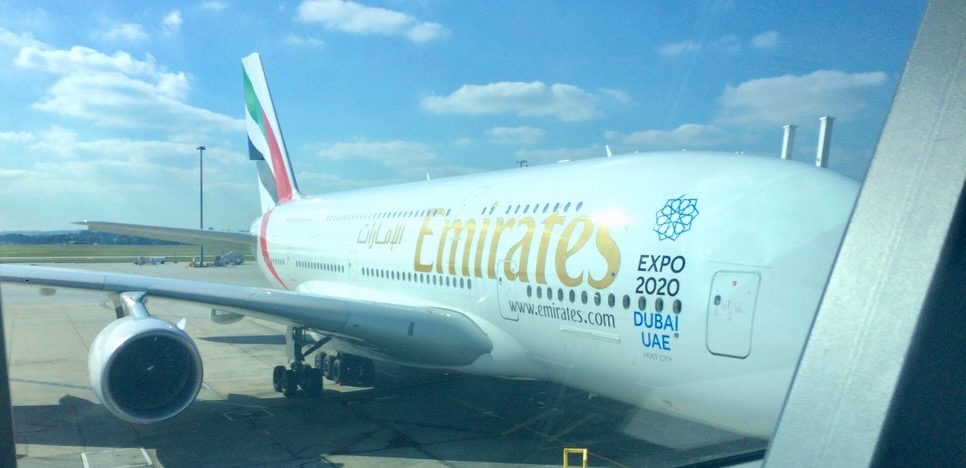From Railway to Runway

Some quick history. The class system in air travel, evolved from the British railways of the 1830s and originally aligned closely with the British Class System. Understanding this evolution from railways to air travel is helpful in understanding the airline class system.
- First class, the epitome of comfort and luxury, was introduced as the most exclusive and expensive option, with padded seats and closed (not open-air) carriages reserved for the elite travelers. This level of exclusivity was a defining feature of the early first class, sparking curiosity about its transformation over the years.
- Second class offered less comfort—seats had less padding and fewer amenities.
- Third class was basic with wooden benches for the working class.
- Some railways around the world introduced a form of fourth class, offering bare-minimum conditions for the lowest fare, sometimes in open wagons.
In the US, trains adopted first and second class—with “Coach” as the general equivalent for third class. Over time in the USA, second class was largely merged with Coach. In the United Kingdom, the Midland Railway abolished its “second class” in 1875, offering only “first class” and “third class” travel.
The origin of the “red carpet” came from the railway world. For the prestigious 20th Century Limited express train operated by the New York Central Railroad between New York and Chicago from 1902 to 1967, a special crimson carpet was rolled out for passengers boarding at Grand Central Terminal. This tradition led to it being considered the epitome of exclusivity, luxury, and VIP treatment.
Airlines and Class
For the first few decades of commercial flight, from the 1920s to the 1940s, airlines primarily offered only one class of service. Essentially this was a luxury reserved for the wealthy. In 1955, the late great TWA revolutionised the industry by introducing a two-class system, creating a “First Class” and a separate “Coach” section. This innovation marked the beginning of a new era in air travel, providing different seating arrangements and levels of service for each class. Most airlines soon followed suit.

By the early 1960s, most airlines had adopted the two-class system, reflecting the changing dynamics of air travel.

Qantas claims that, it was the first international airline to formally offer a dedicated Business Class cabin on its 747s.Here I am in the upstairs Business Class cabin of Qantas Boeing 747-438 (VH-OJA, City of Canberra on display at HARS Aviation Museum Albion Park, south iof Sydney. That was the exact seat I sat in on this aircraft when I first ever flew Business Class.
Inventing Business Class
British Caledonian is often cited as the first airline after Qantas to offer a separate Business Class product, launching it in 1978 for their long-haul London–New York route. Pan Am launched “Clipper Class” in 1978, a premium cabin targeting business travelers between First and Economy. British Airways introduced its “Club Class” (later Club World) in 1979, evolving from their Executive Cabin concept to a true business class in the early 1980s. Air France and Thai Airways also debuted separate premium cabins in the late 1970s, with Thai among the first to actually use the phrase “Business Class”,
Good-Bye First
Air New Zealand was one of the first to remove first class first-class cabins entirely in the late 1990s , in favour of a focus on Business Class business class cabins.It introduced Business Premier along with Premium Economy, and Economy for long-haul services. Virgin Atlantic was among the first to take this step after Air NZ, switching entirely to an Upper Class (business) and Economy model. Delta Air Lines eliminated international First class in 1998, South African Airways, Asiana Airlines, Turkish Airlines, and LATAM then removed First.
Philippine Airlines removed its dedicated Maharlika First Class during a major fleet and cabin reconfiguration that began in late 2008. China Southern phased it out in in the 2010s. United Airlines removed its “Global First” product in 2016. American Airlines is in the final stages of phasing out international first class.
In 2023, Qatar announced the elimination of its First class, but after the 2024 review by the new CEO Al Meer, a future for long haul first class was suggested. This indicates that the industry is constantly evolving and there are exciting developments to look forward to in the future of airline classes.
Oman Air, however, under its new CEO, dropped First last year in 2024, swapping out old first-class suites on the Boeing 787 with “Business Studio” (privacy doors, 82″ lie-flat beds, 23” screens). Malaysia Airlines rebranded its First as “Business Suites” on the Airbus A350 with a 1-2-1 layout and closing doors, offering more space, upgraded service, and amenities than standard business class.
Thai Drops First
Now Thai Airways will be phased theirs out over the next two to three years from 2025. This is a real sign of the times, and feels like the end of an era. Thai has kept first class going only on a handful of flagship routes on their 777s (Bangkok to London, Tokyo, and occasionally Frankfurt.

So why is Thai First making its exit? The simple truth: first class has become too costly for Thai to justify. Fewer travelers are willing to pay for ultra-premium tickets when the best business class cabins now deliver almost all the privacy, comfort, and gourmet service for a much lower fare. These seats often flew half empty, and the return on investment just wasn’t there.
The move will see Thai focusing on next-generation Royal Silk business class, with more privacy, upgraded entertainment, and—much like Oman Air and Malaysia Airlines—a front-row experience designed to capture much of the exclusivity.
Thai’s strategy fits the new travel landscape. Thai’s four-year pandemic recovery, deep fleet cuts, and tight focus on profitability have put pressure on low-occupancy, ultra-luxe first cabins. By 2033, the airline aims to operate 150 aircraft, up from today’s 78, with a consistent 3-class setup across the fleet: business, premium economy, and economy.
New premium economy and economy products will debut first on the 777-300ER and then expand onto more long-haul aircraft throughout 2025. Premium economy will have seats up to 19″ wide, a generous 8″ recline, larger high-definition screens, priority boarding, and an extra baggage allowance. An enhanced hot meal selection is promised, similar to current business class offerings but scaled for premium economy.
Thai’s Economy is getting an overhaul: thinner, lighter seats mean more space, adjustable headrests, USB charging ports and personal screens at every seat. Thai is promising upgraded meals in standard economy—and free Wi-Fi for Royal Orchid Plus loyalty members on most long-haul aircraft.
Which Airlines still fly First?
- Singapore Airlines still sets the gold standard with its flagship Suites Class on the A380: private rooms, a double bed option, luxurious dining, and that renowned service. They consistently sweep awards for best first class seating, catering, and overall experience.
Emirates follows with A380 and “Game Changer” 777 suites: enclosed cabins, onboard shower spas, and an in-flight lounge/bar.

- Air France offers “La Première” on the 777-300ER: single row, ultra-spacious suites with privacy curtains, exquisite Michelin-starred dining, and exceptional personalized service. No surprise they regularly win for onboard amenities and best first class lounge dining.
- Cathay Pacific brings true discretion in first class on selected 777-300ERs: wide seats that convert to a bed, elegant finishes, and famously refined service.
- Lufthansa has its new Allegris suites (A350, 747-8) with customizable temperature and lighting, and top-tier ground services at Frankfurt
- Etihad Airways makes a statement with its A380 “First Apartment” and “The Residence”: the largest suite, a separate bed and armchair, full privacy doors, onboard shower, and personal butler.
- SWISS In 2025, they announced an all-new First Grand Suite product—a private, loft-like suite for one or two passengers, with over 1.8-meter-high walls, available initially on the new Airbus A350-900s (from 2026), and later on refurbished A330s and existing Boeing 777s.
- Japan Airlines showcases its newest “First Suite” on the A350-1000 and the 777: ultra-spacious, technology-rich private cabins, with that special Japanese service touch.
- China Eastern (A350 and select 777-300ER)
- ANA (All Nippon Airways) features “The Suite” on the 777-300ER: wide private suites, 24-inch screens, kaiseki meals, and a serene ambiance.
- British Airways still runs first class on select 777 and 787 services: refined seats, British service, and access to exclusive lounges.
Qantas keeps the legacy going with on the A380: with spacious suites and fine Australian wines.
It also still operates exclusive international lounges in key destinations branded as “First Class” in Sydney, Melbourne, Los Angeles, and Singapore. Distinct from their business class lounges, these award winning lounges deliver a top notch pre-flight experience, even though most passengers are those with One World Emerald status

- Korean Air (select 747-8, 777-300ER)
- Saudia (has First on its 777-300ER on limited routes)
- Garuda Indonesia (on two 777-300ER, of which only one is flying)
Meanwhile, US airlines operate “domestic first class,” but this is not true international first—it’s usually closer to premium economy in seat width, catering, and service. Think plastic cups for your welcome drinks!
In Conclusion- Future Scenario?
Have you ever flown in first class? Was it using points, an upgrade, or did you pay cash? The air travel class system (which originated from British railways 200 years ago), has shaped experiences for 80 years now. First class, long regarded as the pinnacle of comfort and service is definitely gone for many airlines replaced by an enhanced Business class. Will some airlines continue to compete with first class to maintain its appeal? Or will the last First Class flight be a real possibility?


Leave a Reply